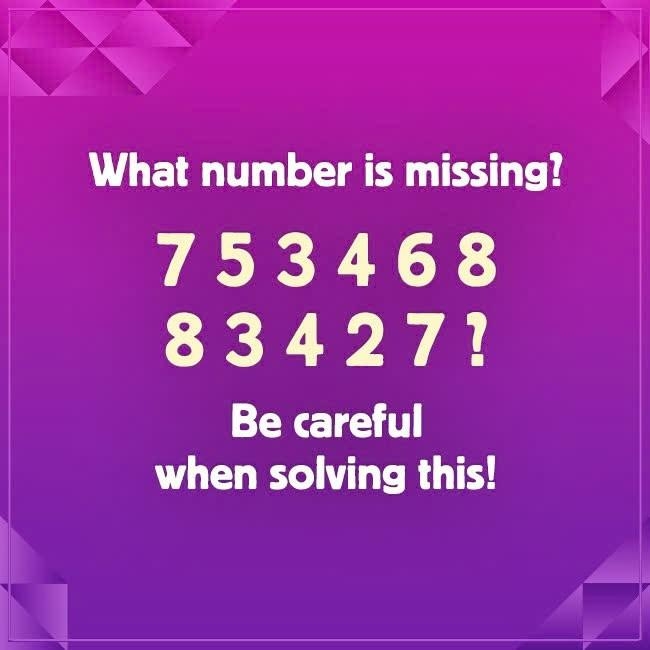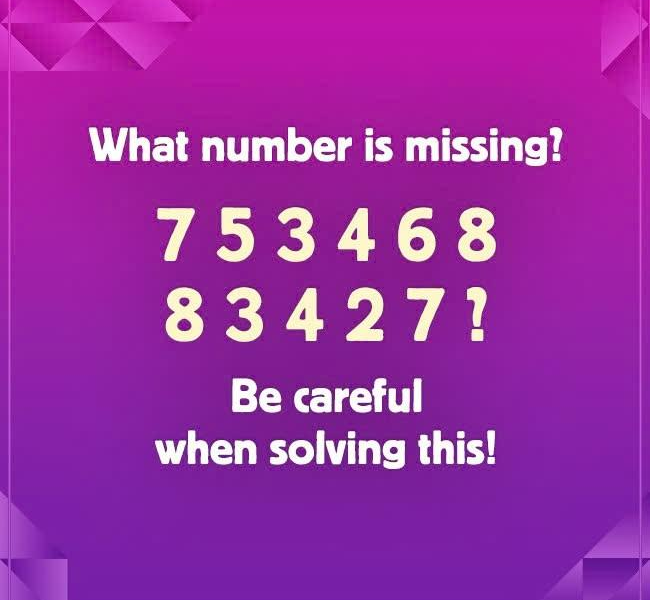Puzzles have a unique way of captivating our minds, challenging us to dive deep and sharpen our problem-solving skills. One fascinating sequence puzzle—“753468 83427?”—has left many scratching their heads, trying to uncover the hidden pattern. It looks straightforward at first, but once you start analyzing it, you realize there’s more than meets the eye. The goal here is to determine the missing number represented by the question mark. In this article, we’ll break down the steps to solve this tricky puzzle, highlight common pitfalls, and reveal the clever pattern hidden within the numbers.
Why This Puzzle is So Tricky

At first glance, the sequence “753468 83427?” doesn’t seem to follow a familiar rule. Many people might look for traditional patterns like consistent additions, subtractions, or multipliers. However, this puzzle’s trickiness lies in its subtle, alternating pattern. It’s not immediately apparent, which is why it trips up so many people. Solving it requires patience, keen observation, and a methodical approach to identify the underlying rule.
Common Mistakes When Solving Sequence Puzzles
It’s easy to stumble when solving puzzles like this, especially if you rush in with preconceived notions. Here are a few common mistakes people make when tackling this kind of sequence puzzle:
- Overthinking the Pattern: Some people assume a complex formula or mathematical operation is required, but the solution is often simpler.
- Missing the Alternating Pattern: The pattern in this puzzle alternates between addition and subtraction. Missing this rule can lead you to think the sequence is random.
- Not Double-Checking Each Step: It’s tempting to move quickly through each calculation, but one minor mistake can throw off the entire sequence, leading you away from the correct answer.
With these pitfalls in mind, let’s carefully analyze the sequence and solve this puzzle step by step.
Step-by-Step Guide to Solving the Puzzle
To decode the sequence “753468 83427?”, let’s start by examining the relationship between the first set of numbers (753468) and the second set (83427), paying attention to any potential patterns. A quick observation reveals that each number relates to the next through a consistent pattern of addition and subtraction. Here’s the step-by-step breakdown:
Step 1: Identify the Pattern of Changes
We’ll start by examining how each number in the first set (753468) transforms into the corresponding number in the second set (83427). The alternating addition and subtraction pattern follows these rules:
- First Number (7 to 8): Add 1 → (7 + 1 = 8)
- Second Number (5 to 3): Subtract 2 → (5 – 2 = 3)
- Third Number (3 to 4): Add 1 → (3 + 1 = 4)
- Fourth Number (4 to 2): Subtract 2 → (4 – 2 = 2)
- Fifth Number (6 to 7): Add 1 → (6 + 1 = 7)
- Sixth Number (8 to ?): Subtract 2 → (8 – 2 = 6)
By following this sequence, we can see that each number alternates between adding 1 and subtracting 2 to arrive at the next number.
Step 2: Verify the Pattern
Once we’ve established the pattern, it’s essential to double-check each step to ensure accuracy. As we go through each transformation, we find that the rule holds true for every pair in the sequence. This alternating addition and subtraction sequence reveals that the missing number, represented by the question mark, is 6.
Solution: The Missing Number is 6
Based on the alternating rule, we can confidently conclude that the number missing from “753468 83427?” is 6. Recognizing this pattern requires attention to detail and a willingness to test out simple operations instead of assuming complexity.
Why This Solution Makes Sense
The genius of this puzzle lies in its simplicity, disguised as randomness. The sequence is structured around a basic, consistent rule: each number either adds or subtracts in an alternating pattern. Once we recognize this, the sequence reveals itself with clarity. The beauty of this solution is in how straightforward it becomes once the rule is known—yet this very simplicity is what makes it so elusive to many.
How to Approach Similar Puzzles
Puzzles like this are excellent tools for boosting cognitive abilities. Here are a few tips for tackling similar sequence puzzles:
- Look for Simple Patterns First: Before diving into complex calculations, check for straightforward addition or subtraction sequences.
- Identify Alternating Patterns: Many sequences use alternating rules, such as adding to one number and then subtracting from the next. Always consider this possibility.
- Write Out Each Step: If you’re getting lost in the sequence, break it down step-by-step on paper. Sometimes, the physical act of writing helps clarify patterns.
- Double-Check Before Finalizing: Small mistakes can derail your solution. Go over each step to confirm the accuracy of your calculations.
Engage with Us: Share Your Thoughts on the Puzzle
How did you find this sequence puzzle? Was it straightforward, or did it take a bit of time to uncover the pattern? It’s always interesting to see the different approaches people take, and everyone has their own unique problem-solving style. We’d love to hear about your strategies for solving sequence puzzles or any other tricky puzzles you’ve encountered recently. Drop a comment below, and let’s discuss!
Conclusion: Sharpen Your Mind with Challenging Puzzles
This puzzle, though seemingly simple, serves as a reminder of the importance of keen observation and patience. Solving sequence puzzles like “753468 83427?” can boost cognitive skills and improve logical reasoning, which benefits us in various areas of life. Each time you tackle a new puzzle, you’re training your mind to see beyond the surface and discover hidden patterns. Keep challenging yourself with more puzzles, and you’ll soon find that your problem-solving abilities are sharper than ever. Remember, the real joy of puzzles isn’t just in finding the answer—it’s in the thrill of the journey!


